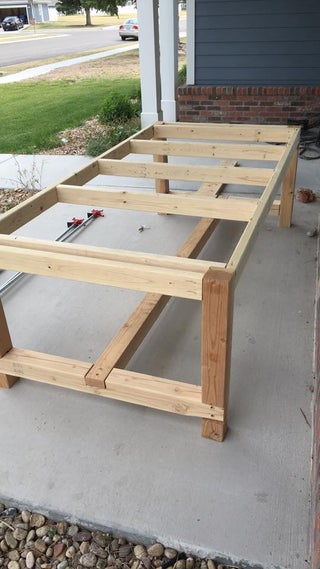Indicators on Highland Manor Wood Products, Llc You Need To Know
Indicators on Highland Manor Wood Products, Llc You Need To Know
Blog Article
What Does Highland Manor Wood Products, Llc Mean?
Table of ContentsThe smart Trick of Highland Manor Wood Products, Llc That Nobody is DiscussingThings about Highland Manor Wood Products, LlcSome Of Highland Manor Wood Products, LlcThe Best Guide To Highland Manor Wood Products, LlcNot known Facts About Highland Manor Wood Products, Llc
Tidy the broken sides of the table leg to make certain a smooth, strong bond. Establish your work area in a well-lit, tidy location to stay clear of any more damage. Meticulously align the broken items. Precision is your pal right here. Use secures to hold the pieces together briefly. When the glue is completely dry, sand the location for a smooth coating.Getting rid of the legs alleviates the stress they may endure if the table is lugged or packed improperly, avoiding them from birthing excessive weight or experiencing excessive stress. Guarantee that the table, specifically its legs, is securely positioned in the relocating automobile. The table shouldn't wobble or have the potential to drop over.

All About Highland Manor Wood Products, Llc
Take the concealing tape and wrap your drill bit about inches of the way down the little bit. This is to help make certain you don't drill via the tabletop while making certain the deepness you require for the screws. Carefully pierce each of the screw holes to the correct deepness, utilizing the marks you made.
Use the influence driver to screw each leg firmly right into place. It's best to go one leg at a time to make certain the placement is right and each leg is secure before relocating on to the following.
(https://trello.com/w/highlandwo0d/members)
Repeat these steps to repair any kind of various other broken legs on the table.
Make use of a jig attended cut them diagonally from corner to catch to produce four edge blocks. Cut a notch out of the rear of the corner block opposite from the diagonal cut to ensure that the notch fits over the top of the leg and provides additional stamina in the edge.
The 5-Second Trick For Highland Manor Wood Products, Llc
Drive another screw, focused via the block, right into the corner of the table leg. Boost your light-weight table by including some ballast. This serves to flatten wayward, thin table tops, along with add some weight to maintain them where they belong. Measure the length and width under the table between the legs.

For a developer look, usage bullnose or profiled moldings instead of wood strips. Great deals of tables have built-in stretchers to add stability. Cots are horizontal pieces of wood regarding 4 inches up from the floor. 2 stretchers run in between the sides of the legs on the table's brief ends, with one long cot linking the two short cots in the.

3 Simple Techniques For Highland Manor Wood Products, Llc
Each piece has its very own tale to tell, and antique table legs play a crucial role in the general aesthetics and stability of these treasures. Restoring them not just revitalizes their elegance yet additionally aids maintain their historic relevance. Comprehending antique table legs begins with recognizing the different types of antique tables and their historical contexts.
Let's explore these action in information. Vintage tables can be found in numerous designs, such as Queen Anne, Chippendale, or Victorian, each with its special layout and functions. Recognizing the type of table you have will certainly direct your repair initiatives. Investigating the historical background of your table can give valuable understandings right into its age, origin, and prospective value.
French bnisterie furniture, with its detailed craftsmanship, would likely be most worth bring back and may necessitate expert solutions, whereas a table found at a yard sales might not justify the repair cost. As you get started on the journey of recovering antique table legs, among the preliminary and pivotal steps is to closely take a look at these essential parts of your cherished item.
The Greatest Guide To Highland Manor Wood Products, Llc
Begin by looking at the surface area of the table legs thoroughly. Search for any noticeable cracks that might have established gradually. Cracks can vary in size and severity, from minor surface blemishes to deep architectural fractures. Each split narrates of the table's history, and resolving them is necessary for both aesthetic appeals and architectural stability (kitchen island legs).
These divides can endanger the overall toughness and additional reading look of the legs. Identifying their existence and level is important prior to continuing with repair. Butt joints are extra at risk to splitting since they provide a restricted surface location for adhesive bonding, making them prone to separation under anxiety or pressure. Pay attention to the joints where the table legs fulfill the table's structure or apron.
Examine the total structural integrity of the legs. Look for any type of bending or turning that might influence their stability. Analyze the joints very closely to evaluate the degree of looseness. Some joints may only need glue and securing, while others may require added reinforcement. By meticulously evaluating the wear and damage, you can develop an extensive restoration strategy customized to the certain needs of your antique table legs.
Report this page